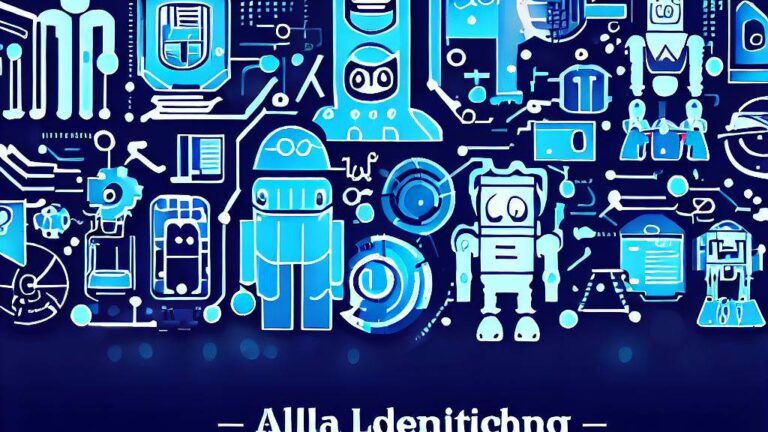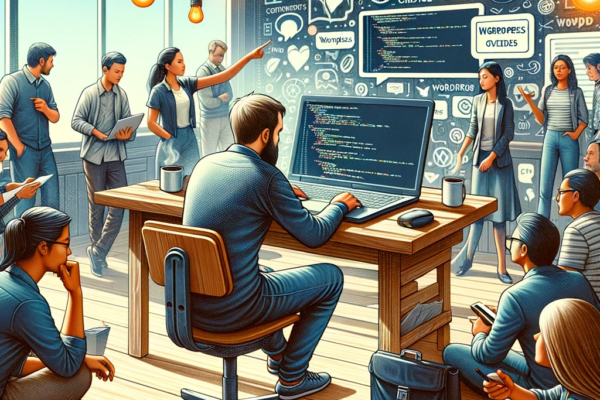In an age where technology continually reshapes the way we communicate, interact, and solve problems, the emergence of chatbots stands as a remarkable milestone. Today AI-driven entities engage in conversation and performing tasks for us. They have revolutionized all aspects of our daily lives, in areas such as healthcare, finance, and even real estate. This article will take you on a short but remarkable journey through the fascinating history of chatbots, detailing their origins, evolutions, and current applications.
The Inception: ELIZA (1960s)
The inception of chatbots began with ELIZA, created by MIT professor Joseph Weizenbaum in the 1960s at the MIT Artificial Intelligence Laboratory. ELIZA’s most famous script, DOCTOR, emulated a Rogerian psychotherapist’s conversation, highlighting the potential for machine-human interaction.
ELIZA’s design was surprisingly simple yet profound for its time. It utilized pattern-matching techniques to parse the user’s input and select appropriate pre-written responses. Despite its lack of genuine understanding, the program’s ability to mimic a real conversation was so convincing that those interacting with it believed they were conversing with a human.
The DOCTOR script highlighted the potential for machine-human interaction. By asking open-ended questions and reflecting user statements, ELIZA created the illusion of empathy and understanding, often leading to deep and personal conversations. This opened possibilities for the use of computers in psychological and therapeutic fields.
Moreover, ELIZA’s groundbreaking concept inspired further exploration into the realm of artificial intelligence. It revealed that machines could engage in meaningful dialogues with humans and respond to emotional cues, albeit at a superficial level. This discovery set the stage for future developments, sparking a revolution in natural language processing and conversational interfaces that continues to evolve today. ELIZA stands as a symbol of the early potential and ambition in the field, an emblem of the human quest to make machines more relatable and communicative.
Early Experimentation: PARRY & Others (1970s)
PARRY followed ELIZA. Developed by psychiatrist Kenneth Colby of Stanford University in 1972, PARRY represented a paranoid schizophrenic patient. These early systems laid the groundwork for natural language processing, though they were simple compared to modern standards. PARRY, unlike ELIZA, aimed to simulate a specific type of human personality – a paranoid schizophrenic.
While ELIZA mostly relied on reflecting the user’s language, PARRY employed more complex models of behavior, including emotion, belief, and attitude, which it used to respond to user inputs. The simulation was convincing enough that when both human psychiatrists and PARRY were evaluated through a teletype machine, the professionals often struggled to distinguish between human patients and the program.
These early experiments with PARRY not only advanced the state of natural language processing but also raised intriguing questions about the nature of intelligence, consciousness, and mental illness. By attempting to replicate the thought patterns of a specific human condition, PARRY offered a unique perspective on how machines might model human psychology.
The work done with PARRY paved the way for more sophisticated AI models and led to broader investigations into how computers might simulate various aspects of the human mind. It marked an era of exploration and experimentation in AI, highlighting both the potential and the limitations of technology at the time. The lessons learned from PARRY’s development continue to resonate, providing valuable insights into the complexity of human cognition and the challenges of replicating it within artificial systems.
Commercial Introduction: Internet Age (1990s-2000s)
With the growth of the internet, the early 2000s saw a new era for chatbots. Commercial applications emerged, such as SmarterChild on AOL Instant Messenger and Windows Live Messenger (previously MSN Messenger) networks. These bots provided weather updates, news, and more, serving as precursors to current virtual assistants.
Chatbots of the early 2000s marked an important transition from experimental AI models to commercially viable products. Unlike their predecessors that were primarily restricted to academic and research settings, these new bots were accessible to everyday users. They provided an array of services, such as checking movie times, weather forecasts, and sports scores within familiar instant messaging platforms.
Success with these early commercial chatbots highlighted the potential for the technology to be used in a wide variety of applications. It opened the door for businesses to explore how AI-driven chat could enhance customer service and create new channels for engagement. Moreover, the integration of chatbots into popular messaging services laid the groundwork for the next wave of personal virtual assistants, such as Apple’s Siri and Amazon’s Alexa, now integral to our daily lives.
The early 2000s were a crucial period for the normalization of chatbots, demonstrating their potential not just as novelty items or research tools. They became practical utilities that could bring real value to consumers. The era signaled a shift in the perception of AI, transitioning from the realm of science fiction and specialized research to a tangible and useful tool intended for everyday use.
Personal Virtual Assistants: Siri, Alexa & More (2010s)
Advancements in deep learning and neural networks brought about significant transformations in the 2010s. Siri, Alexa, and Google Assistant offered us personalized, context-aware voice-driven interactions and responses. Companies started to leverage chatbots on their websites providing 24/7 customer service and support.
The advent of machine learning allowed these voicebots to understand and interpret speech with unprecedented accuracy. This technological leap empowered these conversational agents to recognize users’ speech patterns, preferences, and emotions. The advancements facilitated intuitive and engaging conversations with machines, no longer delivering scripted responses.
Companies were quick to recognize the potential of this advancement for enhancing customer service. By leveraging AI-driven bots, businesses could provide immediate support without human intervention. This increased efficiency and improved customer satisfaction, as inquiries and issues could be addressed in real-time. Industries ranging from retail and banking to healthcare integrated chatbots into their customer service channels, transforming the way they interacted with customers and clients.
The proliferation of specialized bots tailored to specific industry needs became common place. Bots were designed to manage complex financial transactions. Others were developed to provide medical advice or technical support. The ability to customize and train conversation-driven virtual assistants for specific tasks has created new possibilities for automation and efficiency. This era was a turning point where chatbots transitioned from simple text-based interfaces to sophisticated, voice-activated systems capable of handling multifaceted tasks. The result was increased integration of AI in our daily lives.
Specialized Industry Integration (Late 2010s)
Chatbots are now deeply integrated into diverse industry sectors, from healthcare, where they offer preliminary diagnosis, to finance, where they guide users through complex transactions, and to real estate guiding buyers and sellers throughout the sale.
In the healthcare sector, chatbots have moved beyond simple information dissemination to offer preliminary diagnoses and medical guidance. By analyzing user-provided symptoms and medical history, chatbots can suggest ailments and recommend next steps, such as seeking professional medical care or over-the-counter remedies. This has made healthcare more accessible, especially in remote areas, and has relieved the burdens on healthcare professionals.
In the financial sector, chatbots play a crucial role in guiding users through intricate transactions, making complex financial products more accessible to the public. From investment guidance to managing banking queries, financial chatbots function as virtual financial advisors, democratizing access to financial services and fostering financial literacy among a broader population. The application of chatbots in these various sectors illustrates the incredible versatility and potential of this technology to reshape industries and enhance human experiences across a wide array of fields.
The real estate sector has significantly benefitted from the integration of chatbots, transforming the way buyers and sellers interact. Chatbots in real estate provide instant responses to inquiries, offering immediate answers to questions about property details, pricing, location, and more. They also streamline the property-buying process by scheduling viewings, sending reminders, and even offering virtual tours of homes. By overseeing these routine tasks, chatbots free up real estate agents to focus on more complex and personalized interactions with clients. Chatbots are increasingly managing many more aspects of real estate transactions. This represents a tangible shift in the industry, marrying traditional real estate practices with innovative technology to meet the demands of a digitally savvy clientele.
Industry specialization marks yet another turning point for chatbots. Consumers find themselves interacting with textbots and voicebots more frequently during this period. The acceptance of these bots became ubiquitous as they infiltrated everyday life.
Advanced Language Models and Beyond (2020s)
In the latest evolution, models like GPT-3 and GPT-4 have taken conversational chatbot capabilities to new heights. These models understand and generate human-like text, enabling new applications, such as creative writing, technical support, customer service, educational tutoring, mental wellness assistance, legal consultation, entertainment, language translation, and personalized recommendations.
The introduction of these models has indeed marked a significant milestone in the field of AI and chatbots. Their ability to understand context and generate human-like responses has opened doors to myriad applications that were previously unimaginable. Unlike earlier iterations, these models can engage in complex conversations, maintaining context throughout, while providing detailed responses that feel almost indistinguishable from that of human interaction.
Furthermore, the accessibility of these models has also led to a democratization of AI technology. Small businesses, solo entrepreneurs, and individual developers can now tap into the same innovative technology that was once reserved for large corporations and research institutions. This has spurred innovation across various domains, allowing for new business models, products, and services that harness the power of AI. The future promises even more growth and evolution, as the capabilities of chatbots continue to expand and adapt to the ever-changing landscape of technology and human needs.
Future Perspectives
The future of chatbots seems limitless, with potential applications in virtual reality, increased automation, personalized education, and beyond. As AI technology continues to advance, the role of chatbots in shaping communication, engagement, and problem-solving is bound to evolve further. Chatbots and conversational AI has moved beyond being a niche or futuristic concept to being a normal and widely accepted part of how people live and work.
In conclusion, the journey of chatbots from simple text-based interactions to complex, AI-driven entities is a testament to technological evolution. The path has been marked by continuous innovation and adoption across diverse fields, and the future promises even more exciting developments. It is indeed a transformative journey that has redefined our approach to communication and problem-solving, connecting us in ways never before possible.
About the Author
Stephen Howell is a multifaceted expert with a wealth of experience in technology, business management, and development. He is the innovative mind behind the cutting-edge AI powered Kognetiks Chatbot for WordPress plugin. Utilizing the robust capabilities of OpenAI's API, this conversational chatbot can dramatically enhance your website's user engagement. Visit Kognetiks Chatbot for WordPress to explore how to elevate your visitors' experience, and stay connected with his latest advancements and offerings in the WordPress community.





